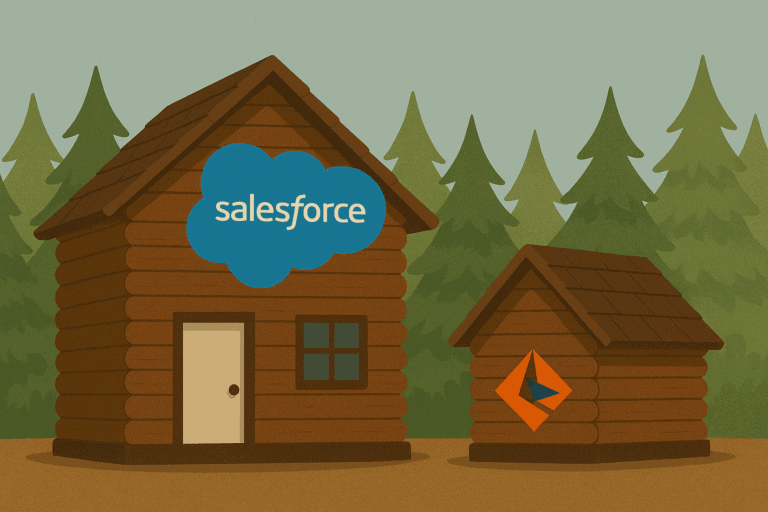Salesforce has opened its checkbook and bought Informatica. What does this company do, and why is it worth $8 billion?
The larger software players acquire startups on the regular. Such acquisition targets are usually only a few years old. This is not the case for the American company Informatica, which has been active since 1993.
Same task, new trend
Informatica specializes in data management. For this reason, the explanation for the acquisition in other reporting is fairly straightforward: data is needed for AI, and Salesforce is making the acquisition to strengthen its own AI offering. However, that is somewhat simplistic. Bringing together information from different databases is something Informatica was already trying to solve when it went for an IPO in 1999.
The current Informatica offering does not reflect its long history. Thanks to its proprietary CLAIRE AI copilot functionality, data management tasks can be fully automated, powered by what the company calls “unified metadata intelligence.” Informatica derives its strength from the fact that it puts metadata at the center of classifying, securing, and making all information reliable.
Management Cloud
CLAIRE AI is part of Informatica’s Intelligent Data Management Cloud. This platform promises to simplify data access, automate tasks with CLAIRE AI, and make an organization’s entire data estate “AI ready.” Scalability, security, and compliance are core promises.
The components within this platform can assist organizations in a variety of ways, with Informatica charging based on consumption. This means that only part of the total offering may be needed, depending on the use case.
For example, the Data Catalog offers the ability to discover critical data or filter out irrelevant information. Together with Data Integration and Engineering, this provides the opportunity to achieve significant cost savings. A proprietary optimization engine contributes to this, while low-code and no-code tools should give business users (without programming knowledge) the opportunity to be in control.
In a broader sense, Informatica’s offering therefore covers all aspects of data management, and its solutions are clearly still up to date.
Salesforce’s biggest deal since Slack
The Informatica acquisition is not yet complete. The deal is expected to be finalized in February, when Salesforce’s new financial year begins. Although Informatica returned to private ownership in 2015 after its IPO in 1999, it was listed on the stock exchange again in 2021. In the same year, Salesforce acquired Slack for nearly $28 billion, its largest acquisition to date.
Informatica does not exceed this amount by any stretch, but $8 billion remains a substantial investment. Salesforce CEO Marc Benioff says that this acquisition will enable his company to create the “most complete, agent-ready data platform.”
Exactly what this combination will look like remains to be seen. However, it is clear that Agentforce can gain an extra dimension with the Informatica offering. “AI agents are only as good as your data,” Informatica suggests, and it is precisely this data issue that many organizations have yet to resolve. Salesforce’s customer base will eventually be able to take advantage of more management options that address this problem.
We already have an indication of how Salesforce will integrate with Informatica from the off. Informatica Intelligent Cloud Services promises to offer a seamless integration between the two software solutions. All data flows, synchronizations, and ETL tasks are already available, which means that the engineering task for the final integration may not be too difficult.
Informatica offers a possible solution for outdated Salesforce solutions
Salesforce has been busy simplifying its underlying stack and data platform in recent years. It is doing this by developing new applications on the core platform and using the Salesforce Data Cloud. Many Salesforce applications are the result of acquisitions. All these applications had different technology stacks and data models; now that data is becoming increasingly important, it is essential to simplify these data models and integrate them better with each other. Salesforce has already improved a large number of applications and functionalities and transferred them to the core platform. However, in many cases, customers still need to make the switch from the older to the newer applications. Salesforce’s strategy here is to let customers do this themselves in phases rather than through a migration, as this is extremely complex.
If customers want to use the most advanced AI functionalities, they will in some cases have to move their work to the newer applications. The old applications are simply not suitable for Agentforce. We see opportunities for Salesforce to use Informatica’s technology to bridge the gap to those outdated applications, or to enable some kind of migration. However, migration seems to be a forbidden word at Salesforce.
